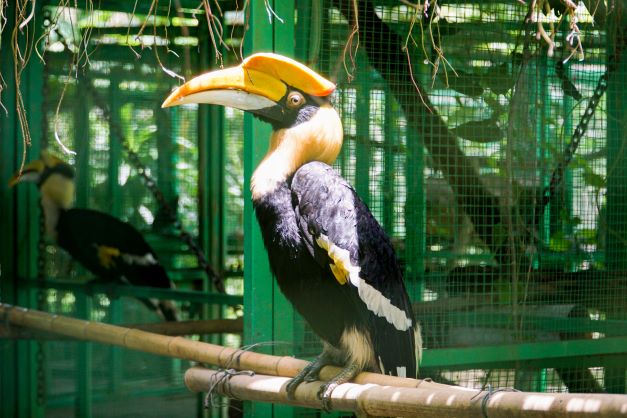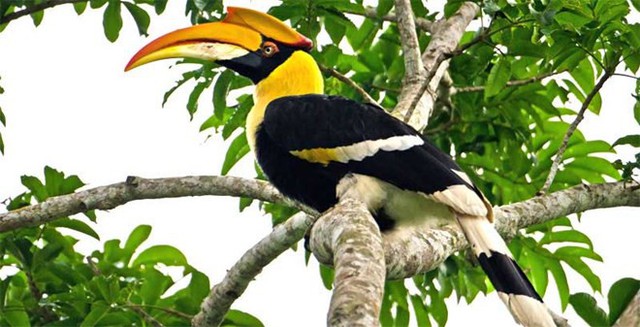The Great Hornbill: A Majestic Bird of Southeast Asia
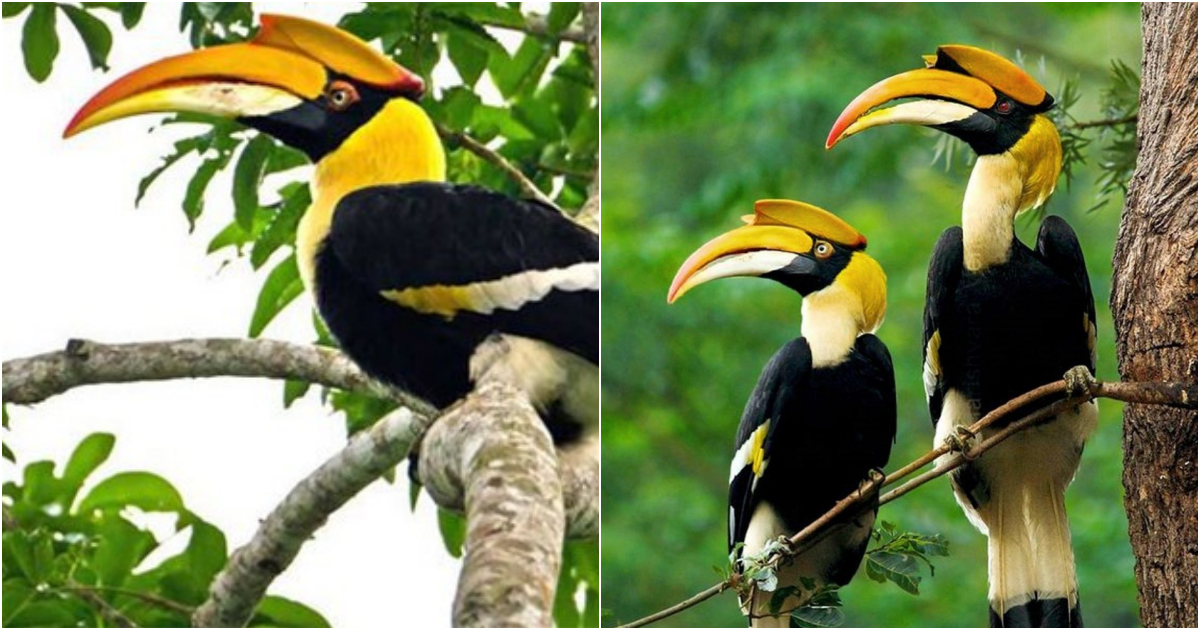
The Great Hornbill (Buceros bicornis) is a unique and remarkable bird found in the forests of Southeast Asia. With its distinctive appearance and unique behavior, it captures the attention of people.

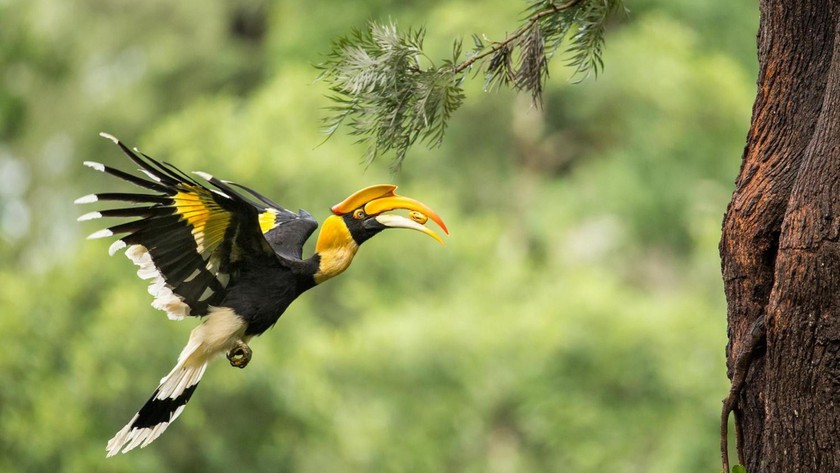 The Great Hornbill has a diverse diet, being omnivorous in nature. It feeds on a variety of fruits, insects, small reptiles, and even small mammals. To obtain its food, the bird uses its powerful beak to pluck fruits or prey from trees. It then tilts its head back and throws the food into its throat to swallow it.
The Great Hornbill has a diverse diet, being omnivorous in nature. It feeds on a variety of fruits, insects, small reptiles, and even small mammals. To obtain its food, the bird uses its powerful beak to pluck fruits or prey from trees. It then tilts its head back and throws the food into its throat to swallow it. These hornbills primarily inhabit the dense tropical forests and evergreen forests of their range. They prefer habitats with high tree density and large trees that provide suitable nesting sites. Great Hornbills are known for their nesting behavior, as they create their nests in tree hollows. The female seals herself inside the nest cavity using a mixture of mud, droppings, and regurgitated food, leaving only a small vertical slit for the male to provide her with food during the incubation period.
These hornbills primarily inhabit the dense tropical forests and evergreen forests of their range. They prefer habitats with high tree density and large trees that provide suitable nesting sites. Great Hornbills are known for their nesting behavior, as they create their nests in tree hollows. The female seals herself inside the nest cavity using a mixture of mud, droppings, and regurgitated food, leaving only a small vertical slit for the male to provide her with food during the incubation period.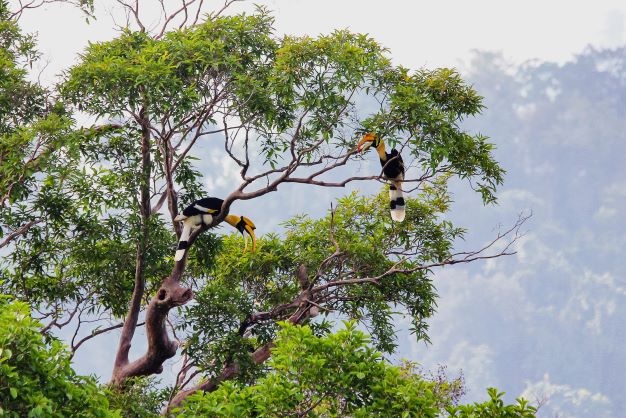
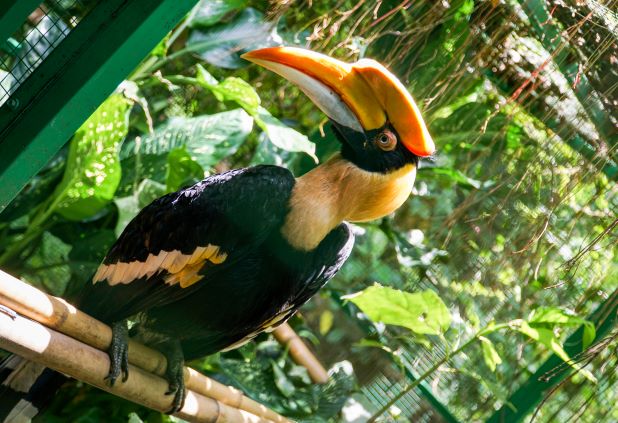 The Great Hornbill plays an important ecological role as a seed disperser. When it consumes fruits, the undigested seeds are excreted, allowing them to germinate and grow in new areas, contributing to the diversity of plant species in the forest.
The Great Hornbill plays an important ecological role as a seed disperser. When it consumes fruits, the undigested seeds are excreted, allowing them to germinate and grow in new areas, contributing to the diversity of plant species in the forest. 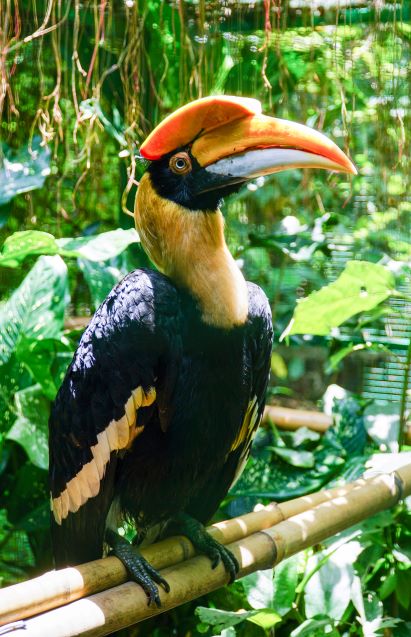 Unfortunately, the Great Hornbill faces threats such as habitat loss due to deforestation and hunting for its beak, feathers, and casque. Conservation efforts are crucial to protect and preserve this magnificent bird and its habitat, ensuring its continued existence for future generations to appreciate and admire.
Unfortunately, the Great Hornbill faces threats such as habitat loss due to deforestation and hunting for its beak, feathers, and casque. Conservation efforts are crucial to protect and preserve this magnificent bird and its habitat, ensuring its continued existence for future generations to appreciate and admire. 